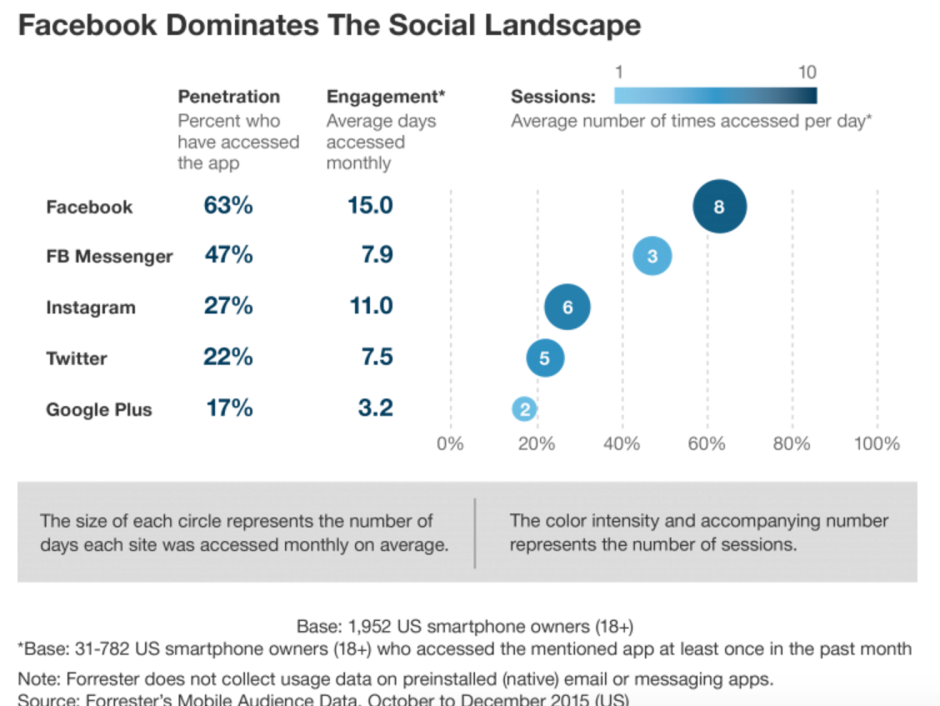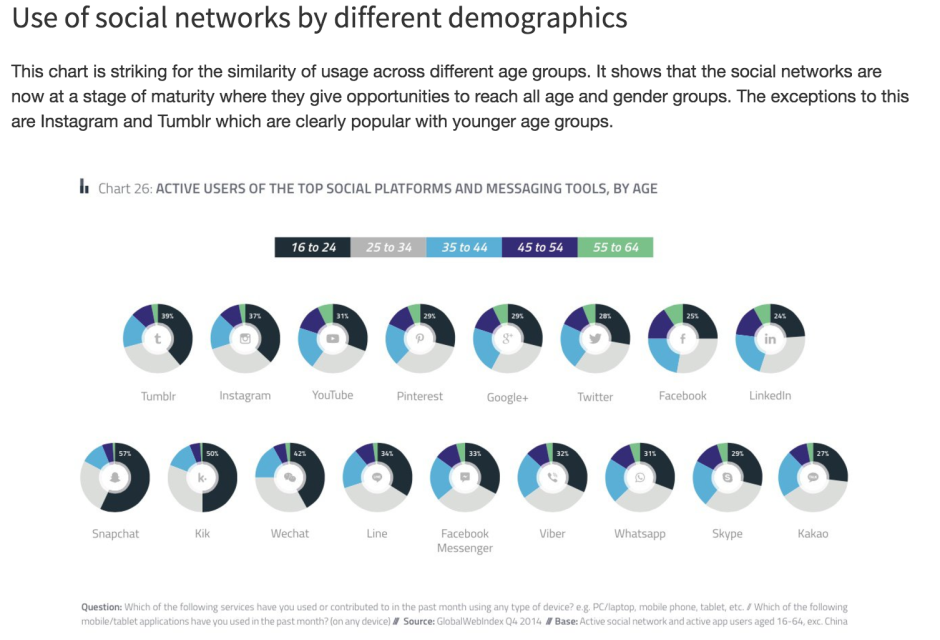Some statistics!
 (link)
(link)




(link)
(link)
I wanted to learn what social networks are the most relevant ones.
Number of people interested in environmental problems is increasing. There are many apps/tools/websites online dedicated to raising awareness of different issues and what can we do to decrease and deal with the the harmful consequences we’re facing.
Since I’m focusing on the waste reduction side, specifically in zero-waste lifestyle.
What is zero-waste lifestyle?
Zero-waste lifestyle followers (or simply zero-wasters) attempt to reduce the amount of waste they produce in every possible way by using own reusable containers wherever they go, by avoiding pre-packaged things and choosing recyclable, reusable and sustainably made materials. Term ‘zero-waste’ represents an idea, an ultimate goal for anyone following this lifestyle.
The movement is less than 10 years old, but already have attracted many people from different parts of the world.
There are three Facebook groups of respectable size:
Most famous representers are:
List of zero-waste bloggers from different nations can be found here and here. Lots of good names and organisations here as well.
Based on my online research, hardest part about following this lifestyle is undoubtedly:
As can be seen above, zero-wasters are present on different Social Medias, including: Blogger, Facebook, Instagram. Some of the Instagrammers are:
Google: https://www.google.co.uk/search?client=safari&rls=en&q=Waste+Data+Flow&ie=UTF-8&oe=UTF-8&gfe_rd=cr&ei=Wm4CWIaCKsP38Ae987HIBw
Cool stuff:
**Tom Szaky’s book, CEO of TerraCycle.
** http://londonist.com/2016/09/zerowastelondoners
Google: http://earth911.com/business-policy/support-sustainable-product-design/
Google: http://www.londonwaste.co.uk/
Ways to start zero waste:
^Change your everyday products for sustainable ones.
UK statistics on Waste (2010-2014)
by Department for Environment, Food & Rural Affairs (link)
‘Total waste’ stats:
Almost half (50.0 per cent) of the 186.2 million tonnes of total waste that entered final treatment in the UK in 2012 was recovered. The proportion that went to landfill was 26.1 per cent (of 186.2m tonnes).
Waste from households:
Biodegradable municipal waste (BMW):
Recovery rate from non-hazardous construction & demolition waste:
=========================================================================================================================
Zero Waste Europe response to Eurostat data for 2014 (link)

=========================================================================================================================
Consequences that come with landfilling and incineration:
Sources:
Link: https://www.greenchoices.org/green-living/waste-recycling/environmental-impacts
Link: http://www.eschooltoday.com/waste-recycling/effects-of-poor-waste-management.html
This is probably one of the hardest things during the life cycle of the project – deciding time frames and how should I go about making this project a reality. So far I’ve only had 1 good experience with delivering a group project, where although we had a small time frame (3 weeks), we were able to make everything look and function amazing, with our mark being around 90%.
But last time I had good developers, who made everything I tell them to make, a reality. This time I’m on my own. And so far, thinking about the project timeline has been rather frustrating. I don’t know how long each thing will take me and I don’t know what the-right-thing-to-start-with is.
Luckily, as part of my ‘First report’, I need to make Gantt’s chart and after seeing a few examples online, I think it may tremendously ease my planning. Here are a few good examples.
Based on the slides by company called Inflectica Technologies (link to slides), they describe such approach in Application Development.
(1-2)
Personal Timeline:
23/10 – First report (to Luca)
28/10 – Ethical Approval Form (on REMUS website)
13/11 – Second Report (to Luca)
02/12 – Background and Specification Form (to Luca)
05/02 – Third Report (to Luca)
12/03 – Fourth Report (to Luca)
11/04 – Final Report (to Luca)
XX/11 – Swift tutorial done.
13/03 – Read last year’s reports (@Keats) + Look at LaTeX.
18/03 – App ready.
Academic timeline:
28/10 – First progress report (4pm)
(28/10 – Ethical Approval Form)
18/11 – Second progress report (4pm)
09/12 – Research/Theory/Background and Specification progress report (4pm)
10/02 – Third progress report (4pm)
(24/02 – Poster deadline)
17/03 – Fourth progress report (4pm)
18/04 – FINAL project report (11.55pm)
(24/04 – 28/04 – Oral examination)
First progress report To-Do’s:
Second, Third, Fourth progress report To-Do’s:
Background and Specification report To-Do’s and Tips: (10 pages)
*Background and context for the project.
*Review of any relevant literature, including web-sites.
*Requirements.
*Specification.
*Design.
FINAL report To-Do’s:
__________________________________________________________________________________________________________________________________
Important notions:
* Possibility to book an iPad for iOS development (@Keats).
Other important points from “BSc Project Guide to Deliverables 2016-2017”:
Hello,
I’m Liza, nice to meet you! As part of my Computer Science degree I need to deliver a project in order to be able to graduate. So here is me starting it!
I decided to document my progress/journey (or at least try to document it), because this is going to be my first independent software project ever, and the biggest I’ve had throughout my university life, for that matter.
For my project I will be building an iOS app that will (hopefully) encourage people to recycle more and reduce waste they’re producing.
– – – – – – – – – – – – – – – – – – – – – – – – – – – — – – – – – – – – – – – – – – – – – – – – – – – – – – – – – – – – – – – – – – – – – – – – – – – – – – – – – – – – – –
My motivation behind this project is rather simple. Some time ago I’ve discovered such thing as ‘zero-waste’ lifestyle. And it resonated with me.
After seeing how I live my life, what I buy and how many things I throw away, it was apparent that there are things I can change about my behaviour to eliminate unnecessary waste I produce. Living in a borough that is a clear advocate of recycling is rather helpful, too. But recycling and preventing production of waste are very different things. I see recycling as a baby step towards being completely zero-waste. So… here my journey begins. Let’s see where it will end.
– – – – – – – – – – – – – – – – – – – – – – – – – – – — – – – – – – – – – – – – – – – – – – – – – – – – – – – – – – – – – – – – – – – – – – – – – – – – – – – – – – – – – –
As you can imagine, I face many challenges such as learning new programming language, learning lots of psychological factors behind people’s behaviour and building and designing an app from scratch. But I am excited and I can’t wait to see where my project will end up!
I will try to document as much as I can here with updates, timelines, ideas etc. I’m always opened to suggestions so feel free to comment.
Thanks! 🙂